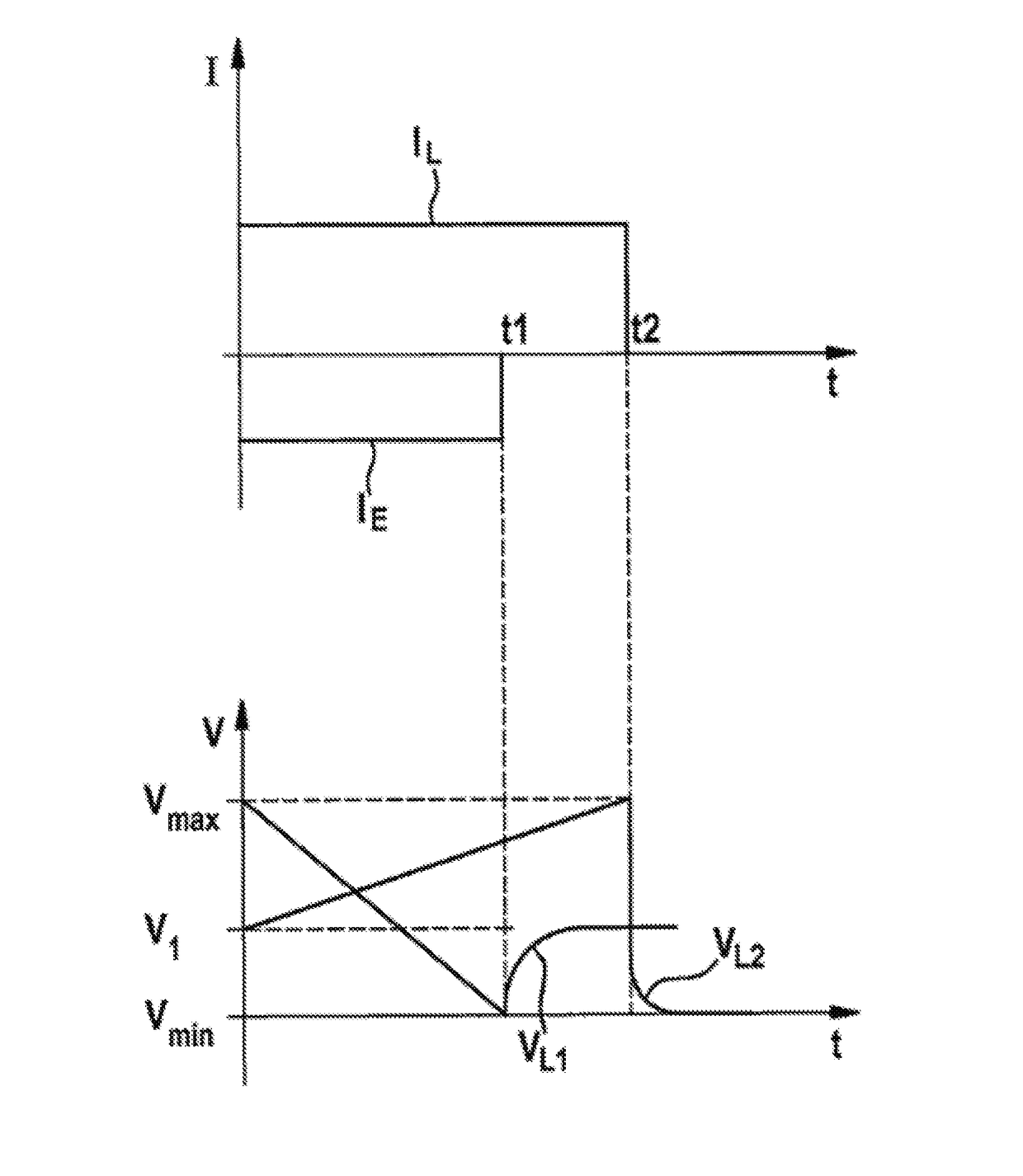Method for determining the temperature of a battery
a battery and temperature technology, applied in the field of methods for determining the temperature of batteries, can solve the problems of comparatively large damage and further damage, and achieve the effect of reliably determined, easy implementation, and easy creation
- Summary
- Abstract
- Description
- Claims
- Application Information
AI Technical Summary
Benefits of technology
Problems solved by technology
Method used
Image
Examples
Embodiment Construction
[0043]A diagram is shown in FIG. 1, which shows the change in the open-circuit voltage VL1, VL2 (lower region) after the end of the flow of a current IL, IE (upper region) at a given temperature and a given state of charge of a battery, such as, for example, a lithium-ion battery.
[0044]The diagram of FIG. 1 shows in detail the profile of the voltage V and the current I versus the time t. It can thereby be seen that if a charging process (charge current IL) or also a discharging process (discharge current IE) is ended approximately at the times t1 or t2, a change in the open-circuit voltage VL1, VL2 can be determined as a function of the time at all of the values of the state of charge. In reference to FIG. 1, a discharge current IE is used for a period of time up to a point in time t1, wherein a drop in the voltage V occurs, and in fact from a maximum voltage Vmax to a minimum voltage Vmin. A disconnection of the cell and therefore the end of the flow of the discharge current IE at ...
PUM
| Property | Measurement | Unit |
|---|---|---|
| temperature | aaaaa | aaaaa |
| state of charge | aaaaa | aaaaa |
| open-circuit voltage | aaaaa | aaaaa |
Abstract
Description
Claims
Application Information
 Login to View More
Login to View More - R&D
- Intellectual Property
- Life Sciences
- Materials
- Tech Scout
- Unparalleled Data Quality
- Higher Quality Content
- 60% Fewer Hallucinations
Browse by: Latest US Patents, China's latest patents, Technical Efficacy Thesaurus, Application Domain, Technology Topic, Popular Technical Reports.
© 2025 PatSnap. All rights reserved.Legal|Privacy policy|Modern Slavery Act Transparency Statement|Sitemap|About US| Contact US: help@patsnap.com


